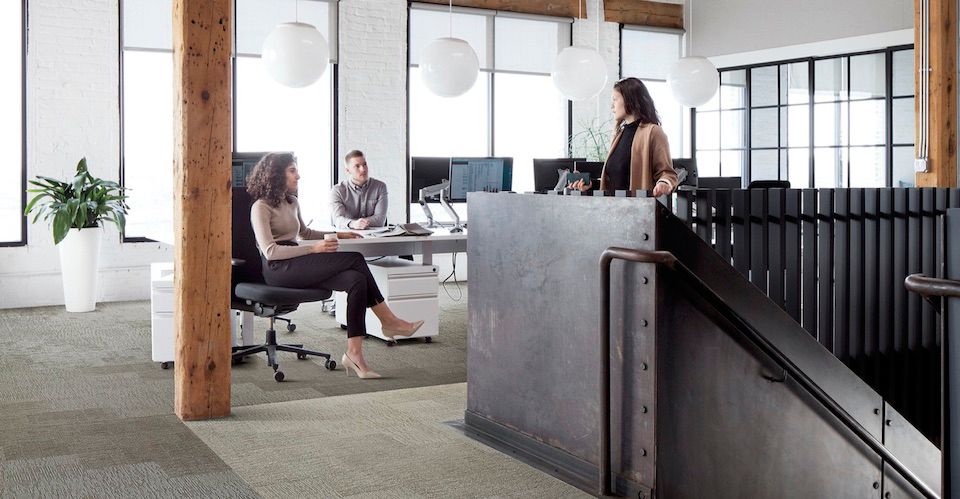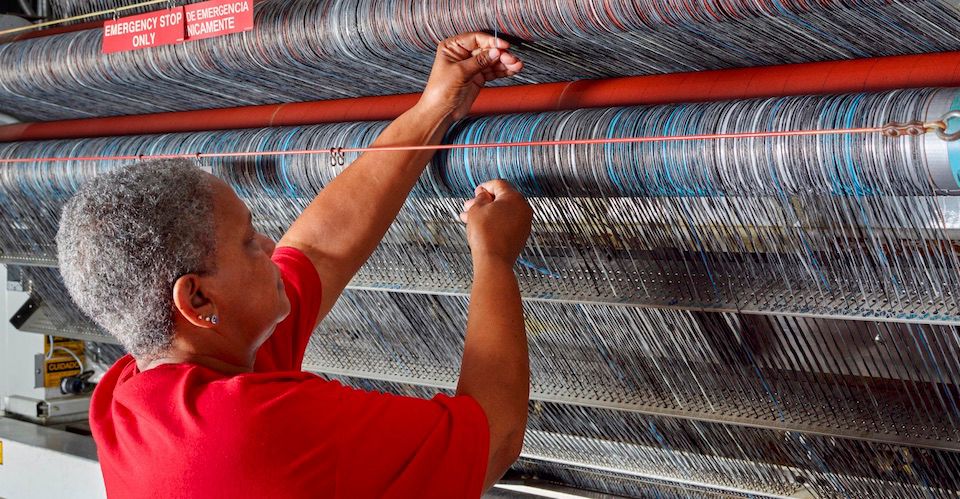Carbon dioxide levels continue to rise every month, contributing to global warming and climate change concerns worldwide. In short, there’s too much carbon, and it’s in all the wrong places. As human activity – including the manufacturing of goods – generates more and more carbon dioxide, the natural world is struggling to keep up, and a dangerous excess of carbon continues to grow.
At Interface, we’ve learned that carbon doesn’t have to be the enemy – it can be an opportunity. Taking a cue from nature, we decided to use carbon as a building block to engineer better products and give back to the planet rather than cause it harm. This included innovation that takes our products beyond carbon neutral and into carbon negative through the use of carbon storage. It also meant improving manufacturing processes and investing in carbon offsets to lower the carbon footprint of our products at every stage of their life cycle, including after installation.
Changing our relationship to carbon isn’t something that happened in isolation or overnight. Here’s a look at how we achieved our carbon negative milestone and learned to love carbon.
Investing in Carbontech Innovation
For nearly 30 years, Interface has focused on reducing the carbon footprint of our products. This is an important step as we endeavor to become a carbon negative enterprise by 2040 and help customers deliver on their own sustainability objectives. Our efforts led us to use more recycled materials and to transform our manufacturing processes. Ultimately, we began to explore how to remove carbon from the atmosphere, where it contributes to global warming, and create products that store carbon. We continue to actively explore using carbon-storing materials to make our products.
As part of our Carbon Neutral Floors™ program, the flooring products that we sell – including carpet tile, resilient flooring and nora® rubber – are third-party verified carbon neutral across their full product life cycle. We recently went beyond carbon neutral and launched the first carbon negative carpet tile in 2020.
These products store more carbon than is released during their production – all the way from raw materials extraction, through the manufacturing process, up until the final product leaves the factory – which is known as “cradle-to-gate.”
Writer and climate author Jon Gertner visited Interface to learn more about our carbontech innovation and see our manufacturing processes firsthand. He discussed his experience in a feature published by The New York Times Magazine, sharing that by some estimates, nearly 40% of global CO2 emissions come from buildings and construction – a level that isn’t sustainable.
In addition to Interface’s own innovation, Gertner also featured other organizations – such as Carbon 180 and CarbonCure – that approach carbon as a resource and invest in technological, ecological, and social solutions to reverse global warming.
As more companies in the built environment and beyond develop commercially viable carbon-storing tools and materials, these solutions will benefit the larger population and will likely drive interest in procurement of such products.
In 2020, Interface introduced the first carbon negative carpet tile when measured cradle to gate as part of the Embodied Beauty™ collection.
© Christopher Payne/Esto The New York Times Magazine profiled Interface’s carbon negative innovation in June 2021.
Low-Carbon Procurement in Commercial and Residential Spaces
Thankfully, many leaders within the architecture and design community recognize the impact of carbon on our built spaces. The LEED® green building program from the U.S. Green Building Council (USGBC) has become the premier standard for how buildings save money, improve efficiency, lower carbon emissions, and create healthy places for healthy people. Because of the USGBC’s influence, the building industry has made huge strides in improving both operational emissions (resulting from general building use like those from HVAC and electrical systems) and embodied carbon emissions (resulting from the full life cycle of a building’s construction materials).
In recent years, designers have embraced going further to support the future of sustainable buildings. Their efforts include an emphasis on sourcing low-carbon products that deliver the lowest impact on the environment. By choosing environmentally aligned vendors, companies can make real progress toward reducing the emissions associated with their built spaces. In fact, flooring can be one of the largest contributors to the overall carbon footprint of a building’s interiors. However, by selecting low-carbon products, architects and designers can significantly reduce their project’s environmental impact.
For example, if a designer selects Interface’s carbon negative carpet tile for a project requiring 135,000 square yards of carpet, it amounts to 74,500 pounds of CO2 stored in the carpet and removed from the atmosphere. This is equal to the emissions created when driving an average passenger vehicle 84,928 miles. Imagine what can be achieved when applying this theory to an entire building, from its furniture and surfaces to the steel and concrete that make up the structure.
Carbon has always been and will continue to be a part of our environment. It’s the sixth most common element on Earth. And while reducing carbon emissions plays a vital role in combating climate change, it’s time we stop looking at carbon as an enemy to be destroyed and start loving it for what it is – a building block for a better life.

